Die Regenerationsfähigkeit der Skelettmuskulatur
Abstract
Die organotypischen Stammzellen des Muskels stellen ein potentes Wachstums- und Reparatursystem dar, das nicht nur dem Kind Muskelwachstum beschert, sondern beim Erwachsenen Muskelhypertrophie durch Krafttraining und «body building» zulässt. Ein Muskel, der im kontrahierten Zustand passiv gedehnt wird, kann ausgiebige Mikrotraumen erleiden. Bei all diesen Vorgängen, Wachstum und Verletzung, beginnen die so genannten Satellitenzellen zu proliferieren, um sich schließlich in die vorhandene Muskelzelle zu integrieren. Wenn man den Befunden folgt, dass bei Muskelatrophie andererseits Kerne verloren gehen, die später wieder ersetzt werden müssen, beginnt man zu ahnen, welch lebhaftes Geschehen im Muskel abläuft, ohne dass wir davon viel merken. Umso wichtiger erscheint die Frage, ob diese Potenz auch im Alter noch erhalten bleibt. Menschliche Zellen teilen sich in der Kulturschale nicht endlos, sondern vergreisen. Aus Biopsien gewonnene myogene Zellen in den Mausmuskel gebracht, wachsen und produzieren dort humane DNS und humane Proteine tatsächlich abhängig vom Alter des Spenders. Als Trost mag gelten, dass auch 80-Jährige noch eine beachtliche, wenn auch deutlich reduzierte Proliferationsfähigkeit in ihren myogenen Stammzellen haben. Die Verwendung humaner Myoblasten als Gen- und Zelltherapie etwa bei Duchenne´scher Muskeldystrophie scheitert heute selbst bei Beachtung des oben Gesagten an der Unmöglichkeit, alle gefährdeten Muskeln im Körper und das Herz zu erreichen.
The organotypic stem cell of skeletal muscle has previously been known as satellite cell. They allow muscle fiber growth during ontogenesis, enable fiber hypertrophy and are responsible for the very efficient repair of muscle fibers. This efficient apparatus is to some degree counterbalanced by an enormous use of the satellite cell pool: fiber atrophy probably is accompanied by loss of myonuclei such that every reversal of atrophy is bound to use new myonuclei i.e. satellite cells. How often in life does this occur? Hard to say. Moreover, the potent repair capacity is challenged by an unexpected vulnerability of skeletal muscle fibers: Passive stretching of contracted muscles may cause multiple “microdamage,” disruption of contractile elements or tiny areas of true necrosis (focal necrosis). How often does this happen? Well, for many of us at least once per year when we go up and down mountains during vacation time, followed by sour muscles. Others may decide to change his/her (locomotor) behaviour by severe onset of jogging; it may happen that they suffer kidney failiure on Monday due to muscle microdamage and the transfer of myoproteins into the serum over weekend. Also 20 minutes of stepping up and down something like a chair will do: There is a remarkable increase in kreatin kinase and other muscle derived proteins which lasts for days and is bound to reflect some muscle damage. How about sportsmen and worker who repeatedly use their muscles in such a way? We don´t have answers yet to most of these questions, but considerable amount of information has been collected over the last years both in animal and – less – in human. What is common in all cases of growth and repair is the proliferation of the satellite cells and their consequent incorporation and fusion with the parent fiber. This way focal damage is repaired often without visible reminders. We would run out of satellite cells were they not stem cells: After division one daughter remains a satellite cell while the other is free to divide. Divide how often? Important for the human cells since the cell ages and proliferates slower and slower till it stops to divide at all, at least in culture. The same is true for the new satellite cell. This we know from recent experiments in which human biopsies derived myogenic cells were grown in vitro and in vivo (by implanting them into skeletal muscles of immunoincompetent mice): Growth correlates negatively with age of the donor. Between age 2 and some 70 years, about two divisions are performed by each satellite cell in human vastus lateralis and biceps brachii muscle in 10 years in the average. Most important for the older among us: at age 76 there are still some 13 divisions left before complete exhaustion. However, there are diseases like Duchenne Muscular Dystrophy (DMD) in which muscle fibers lack a structural protein with the effect of enhanced vulnerability to mechanical stress. There the enhanced use of the satellite cell pool makes the remaining growth capacity in an 8-years-old child as low as otherwise found at age 80. Some time ago, implantation of genetically intact myoblasts obtained from healthy relatives has been proposed as a treatment of DMD. Every logic would have predicted that some local implantation of whatever numbers of cells was bound to fail rescue the complete musculature or at least the muscles for breathing. The human as guinea pig? Now, even years later, we still collect the basic information on growth of human myoblasts and start thinking of ways for systemic application and quantitatively relevant incorporation of the myogenic stem cell or other – possibly pluripotent – stem cells derived from bone marrow.



